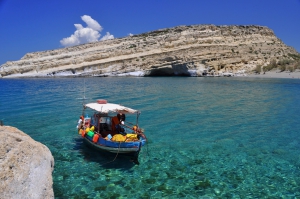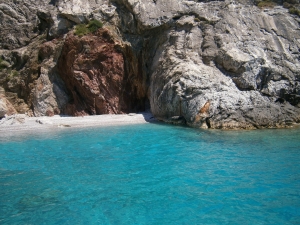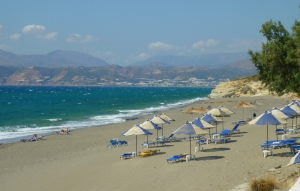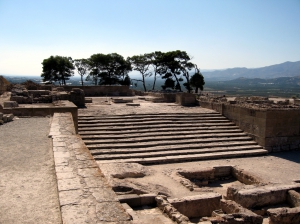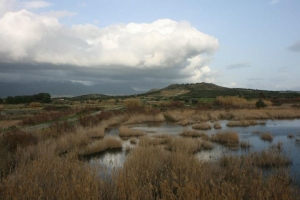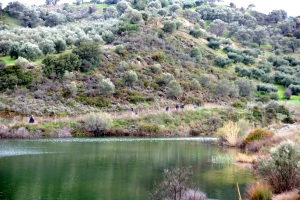Matala is famous for the carved caves in the rocks and the hippies of the ‘70s. It is located close to Phaestus, the second-largest palace of the Minoan civilization. Matala was the port of Phaestus, and in the Roman Times, it became a port of Gortys.
Kokkinos Pirgos (i.e. Red Tower) is located 67km west of Heraklion and close to the town of Tymbaki. The name is taken after the tower that was there and was built with reddish soil. The purpose of this tower at this point is still unknown. It is the seaside village of Timbaki, home of the port of the region and developed touristically.
Paximadia Islands are two small uninhabited islets off the Gulf of Messara, 12km (7.5 miles) south of Agia Galini. By far they seem like a single island because they are very close. You may also hear locals refer to these as "Elephant", since from afar they remind you of a lying elephant. Their total length is about 3km.
Kalamaki is a small seaside village located 65km southwest of Heraklion, between Matala and Kokkinos Pirgos. The beach in front of the village is only a small part (2,5 km) of the vast seafront that stretches along the long Bay of Messara.
Phaestus (Phestos or Festos) was a Minoan city on Crete, the ruins of which are located 55km south of Heraklion. The city was already inhabited since 6000BC and prospered concurrently with the city of Knossos, till the 1st century BC.
Geropotamos, the sacred river of the Minoans, gathers the water of Mesara Plain and exits inside the military airport of Tymbaki, close to Kokkinos Pirgos. The coastline south of Kokkinos Pyrgos has several places where small ponds of foremost ecological importance are formed, with the nicest being at the area of Pahia Ammos (or Afratias), which can be accessed through dirt track.
The dam of Faneromeni is located 7km west of the village of Zaros and about 7km north of Tympaki. It is located in a scenic location, in a verdant valley at the southern foot of Psiloritis Mount. The artificial lake covers an area of approximately 1000 acres and has a capacity of 20 million cubic meters.
At the banks of the river Geropotamos, at position Agia Triada, the Minoans built a small palace that was excavated by the Italian Archaeological School at Athens in 1902-1914. This Royal Villa was built in the 16th century B.C. (New Palace period) and was probably used as a summer villa for the king of Phaestus or as permanent residence after the destruction of Phaestus palace in 1450BC.
- 1
- 2















